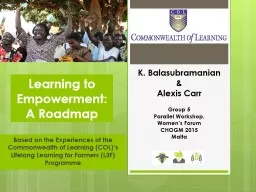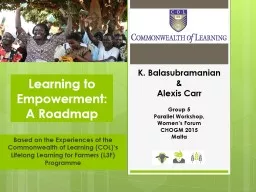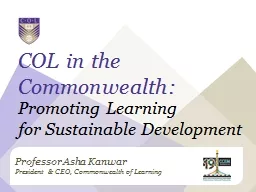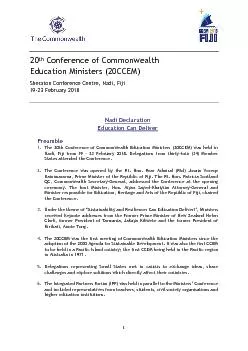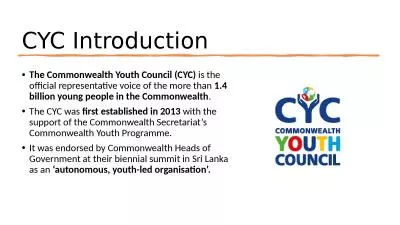PPT-Based on the Experiences of the Commonwealth of Learning (C
Author : myesha-ticknor | Published Date : 2017-10-05
Programme Learning to Empowerment A Roadmap K Balasubramanian amp Alexis Carr Group 5 Parallel Workshop Womens Forum CHOGM 2015 Malta Relationship between Education
Presentation Embed Code
Download Presentation
Download Presentation The PPT/PDF document "Based on the Experiences of the Commonwe..." is the property of its rightful owner. Permission is granted to download and print the materials on this website for personal, non-commercial use only, and to display it on your personal computer provided you do not modify the materials and that you retain all copyright notices contained in the materials. By downloading content from our website, you accept the terms of this agreement.
Based on the Experiences of the Commonwealth of Learning (C: Transcript
Download Rules Of Document
"Based on the Experiences of the Commonwealth of Learning (C"The content belongs to its owner. You may download and print it for personal use, without modification, and keep all copyright notices. By downloading, you agree to these terms.
Related Documents

